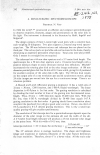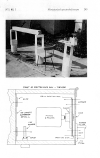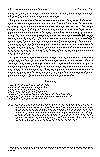Update Fred's Latest 'Large' SHS (August 2003)
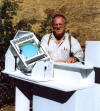
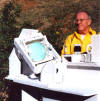
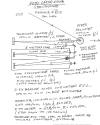
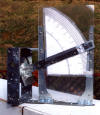
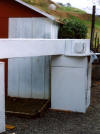
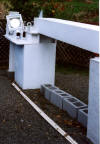

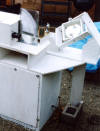

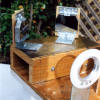


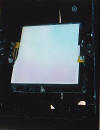

Picture 1&2: Fred
and the Large SHS
Picture 3: Fred's
Notes on the design of the LSHS
Picture 4: Grating
Picture 5, 6, 7 and
8: The Large SHS
Picture 9 6"
Telescope mirror and two 4" spec mirrors
Picture 10:
Two 55x70mm flats, 1/10 wave; Barlow 2.3x; 500mm F.L. from Newport Glass
Picture 11:
Two 4" spec mirrors
Picture 12 to 14:
Front of SHS box showing grating Diffraction Products 100x100mm grating 600 gr/mm
2.2ml blazed
Fred's Latest 'Large' SHS (July 2002)
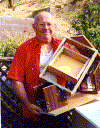
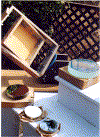

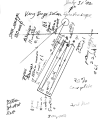
Picture 1: Fred and
his Heliostat
Picture 2: 200mm
flat, 150mm mirror, 2x160mm mirrors
Picture 3: The large
spectrohelioscope
Picture 4: Schematic
of the large spectrohelioscope
Visual Acuity and Spectrohelioscope Design by Fredrick N. Veio, July 30 2002
The F ratio of a SHS should be about F:45. Assume a 2.7 meter f.l.
telescope, a 1.9 meter f.l. spectroscope, a grating 32x30mm ruled
area with 1200 gr/mm, 5000A blazed, slits adjusted to about 0.6A
passband for H alpha. The solar disk will be comfortably bright to
study, all details will be easily seen, even very faint detail.
Eyepiece power will be about 25X. Can use 0.2A passbamd.
A SHS does not show the full diameter of the solar disk to visual
examination. Mechanical and optical factors of the solar image
synthesizer restrict the instrument to about 20 arc/min by about 30
arc/min field of view, maybe less.
The human eye has maximum sensitivity at green-yellow, call it 100%.
In the orange-red for H alpha, about 10% sensitivity. In the violet,
about one percent. Only a redesigned SHS and a young person can see
the solar disk in violet K light. The cornea of the eyes yellow with
age. The main useful wavelength is H alpha light.
For the solar continuum of the sun itself, call it 100%. The yellow
sodium lines and the Mg lines are about 8%. The H alpha line is about
16%.The violet H and K lines are about 6%. Strong telluric lines are
zero per cent.
The grating efficiency of a 5000A (green) blazed wavelength has about
80% of the light at that wavelength. For the same grating, efficiency
at violet will be about 20%. For same grating, efficiency at H alpha
will be about 40%.
Petit Prisms by Fredrick N. Veio, July 30 2002
In my book on the SHS, I have the basic details of the Petit prism set up.
I myself have not mounted the prisms per Petit. I pass along their experience
which I got from Sky and Telescope editors and two professional astronomers of
about 25 years ago. The NOAA shs run by Dr. P.McIntosh and Dr. H.Leinbach had
Petit mounted prisms.
Quality of the prisms: the glass must be grade A flint. The surface
flatness can be about one wave, since the solar image is about 99% focused at
the entrance slit. The 90 deg angles do not have to be high accuracy, about
plus or minus 40 sec-arc is acceptable. Realize that any slight wobble of the
solar image on the slits will not cause a problem as long as the slight wobble
is less than width of the slits themselves. So if the prisms give a wobble of
the solar image of about 10 microns, and the slits are about 100 microns wide,
you do not have a problem. Average quality prisms of 90 deg angles with
40 arc -sec errors are not expensive. High quality prisms with high angle
accuracy are very expensive.
Comment on Hale's Anderson Prisms:
Hale never used large
Anderson prisms. He had prisms (attributed to Dr. J. A. Anderson in his
article 'A Simple Solar Telescope and Spectrohelioscope' in Appendix F.2
Amateur Telescope Making 3, Willman-Bell) about 30mm long, squareness was
about 15x15mm. About 5mm was for mounting in its cell. He never stated why but
maybe he was warning us about something. The field of view through his prism
will be about 25mm long by 2/3 x 15mm, or field height will be about 10mm. So
overall view will be about 25x10mm. He never stated the accuracy of the
angles, nor flatness of surfaces.
Solar Magnetic Fields by Fredrick N. Veio, June 2002
A visual spectrohelioscope at NOAA,Boulder, Colorado, directed
by Dr. Patrick McIntosh. Had a heliostat, telescope concave mirror of 200mm
diameter with 5.4 meter f.l. The one Ebert spectroscope mirror of 200mm
diameter and 1.5 meter f.l. Grating was 50mm round with 1800 gr/mm, blazed
for one micron wavelength. Linear dispersion in first order was 2.7A/mm in
green, second order 0.6A/mm. Passband was 0.05A for magnetic fields in the
blue wing of the line with 0.05A offset. The Polaroid was fixed, the 1/4 wave
retardation plate was rotated manually 90 deg to change from north to south
polarity of a magnetic area on the solar disk. The spectroscope mode and SHS
mode were used in visual and photographic methods. His book "Solar Activity
Observations,.....", 1971. He sent in magnetic results to Mt. Wilson, and
there is an 85% match up with Mt. Wilson work.
A solar observtory in Australia uses three filters in tandem to
give 0.05A passband for magnetic fields. Dr.Robert Howard book, "Solar
Magnetic Fields", 1971, has excellent 0.05A passband photographs of the the
magnetic fields.
In 1964 the Veio spectrohelioscope in the spectroscope mode
measured the dark visual width of spectral lines. High dispersion was
necessary with 1.9 meter f.l. spec lens, 1200 gr/mm, 32x30mm ruled area. First
order was 4.1A/mm in green, second order 1.8a/mm in green. Spectrum about one
meter long in the first order, about 2.5 meters in the second order.
Visual Dark Core of Some Spectral
Lines
|
Line appearance |
Ion |
Wavelength |
Core width |
1st order |
2nd order |
|
|
|
|
|
|
|
Very strong |
CaII H |
3968A |
2.0A |
---- |
---- |
|
|
CaII K |
3934A |
3.0A |
---- |
---- |
|
|
|
|
|
|
|
Strong |
H-alpha |
6563A |
0.6A |
150 microns |
450 microns |
|
|
Na I |
5896A |
0.1A |
25 |
62 |
|
|
Mg b1 |
5184A |
0.1A |
25 |
62 |
|
|
|
|
|
|
|
Medium strong |
Mg b4 |
5167A |
0.05A |
12 |
30 |
|
|
|
|
|
|
|
Less strong |
NII |
5893A |
0.03A |
6 |
15 |
|
|
|
|
|
|
|
Faint |
--- |
--- |
0.015A |
3 |
8 |
The disperson of the grating is not linear at long f.l. spec
optics, high grooves/mm and high orders. For example, with a 1200 gr/mm
grating, in the green going from first order to second order, disperson is 2.5
times higher, and in the orange-red (H alpha) going from the first to the
seond order, dispersion is 3.0 times higher.
There are about 4000 solar spectral lines that can be seen with
the naked eye from about 3900A violet to the 6600A orange-red, assuming
32x30mm area with 1200 gr/mm. Book by Dr. C. E. Moore, "The Solar
Spectrum,------", National Bureau of Standards (USA), No. 61, 1966 m.
A sunspot with 2500 gauss will have a Zeeman splitting of a
strongly sensitive photospheric line of 0.1A to the violet and 0.1A to the
red, total width 0.2A. Many Zeeman spectral lines have a dark visual core of
0.03A width. The penumbra has about 800 gauss, giving about 0.03A to the
violet and 0.03A to the red, total 0.06A width in the penumbra.
Zeeman Effect versus
Paramenters
1200 gr/mm spec. 1st order spectrum 2nd order
spectrum Zeeman, 2nd order
grating area f.l. green length
green length 2500g 0.1A 800 g
32x30mm 1.9 meter 4.1A/mm 1.0 meter 1.8A/mm 2.5
meter 62 micron 20 mic
64x64mm 3.8 meter 2.0A/mm 2.0 meter 0.9A/mm 5.0
meter 124 mic 40 mic
100x100 5.7 meter 1.3A/mm 3.0 meter 0.6A/mm 7.5
meter 186 mic 60 mic
Big Bear Solar Observatory has a spectroscope f.l. of 3.7
meters, grating 1200 gr/mm, linear dispersion 1.0A in the second order. They
have a magnetometer. Mt. Wilson 150-foot Solar Tower has 75 ft f.l. spec with
linear dispersion about 0.1A/mm, or10mm/A.
A telescope of 5.4 meters f.l. gives a 50mm diameter solar
image on the entrance slit. The umbra is usually too dark (2500 gauss) to see
the line become thicker and split. But the same line in the penumbra will be
seen to thicken easily. Sometimes the umbra is not too dark(maybe 1200 gauss),
so the line will seen thicker. And the same line in the penumbra will not be
thicker.
Addendum: the wavelength used by Dr. McIntosh is
the green Mg I b 1 line of 5167A wavelength, dark visual core of 0.05A. It
is an easy line to find, easy to use, wide enough to work with. Most lines
used by the pros are about 0.03A wide, not as easy for an amateur to work
with.
Dr. P. McIntosh of NOAA had a large spectrohelioscope for
about 20 years, not using it now, made visual and photo observatons of the solar
disk and magnetic work. He used the green b 1 line of Mg I 5167A wavelength.
The dark visual core is 0.05A, so he made his passband 0.05A wide, simple. There
is a nearby Fe I line about 0.1A. There is a technical way to avoid the nearby
Fe Iline. Will discuss later.
Professional observatories use certain Fe I and Ca I lines
with visual dark cores of 0.03A. So they have a passband of 0.03A. There are no
nearby other spectral lines. That is, no line close nearby, maybe about one
angstrom but that poses no problem. So their technical methods are somewhat
different than by Dr. McIntosh above.
Amateurs think that they need large optical systems for
magnetic fields. Not so. For about 200 gauss fields, not need a large
instrument, just medium large thereabouts, not so expensive. For about 2 gauss
fields, then one needs something like Mt Wilson, cost lots and lots of money.
Fred Veio and one
of his small solar spectroscopes
Fred made it for a
friend and when the friend passed away it was given back to him. I
believe that it uses 40mm dia. achromats with 16" focal length and 1800 gr/mm
grating. He used pencil sharpener blades for the slit.

You should make a solar spectroscope. You must mount it separately and
parallel to the Coronado or Daystar H alpha filter. There is much interestng
solar disk and solar limb details to easily see. A spectroscope is much
easier to put together than a spectrohelioscope, and the adjustments are
less critical. With a cross hair you can pin point events exactly so, not
difficult to do, not need a monstrosity.
Apogee and a few other companies sell achromats of somewhat long f.l. Prices
are reasonable too. Average cost about $130. Do not complain. A few other places
sell for about triple that price. Test the achromat for spherical aberration. If
you got 1/6 was, stop down a bit, will improve to about 1/8 wave on the
wavefront at infinity focus.
Use one for the spectroscpe section, and another for the telescope section
with a 2x barlow. about -500mm fl, to double the efl.
For the telescope about 80/1300 or related achromat is excellent, use with a
2x barlow get about 2600mm efl, giving a one inch (25mm)diameter solar image on
the entrance slit. The spectroscope can be a similar achromat of about80/1300mm.
The grating can be about 25x50mm with 1800 gr/mm 50% theoretical resolution,
resolving power about 0.2A,not too expensive, say about 150 dollars. If you got
a 50x50mm grating, can stop down on the sides to about 25x50mm to improve
resolution.
Tilt the grating to the yellow near the sodium lines, with the slit over a
bright hot plage you see the heliumm line in absorption easily, two very faint
atmospheric lines nearby will cause no problmes. sometimes the helium line is in
emission, do not need a flare, just a local very hot local area. Sometime the
helium line is seen in absorpton and in emission.
Tilt the grating to the H alpha line, with the entrance slit over an emerging
magnetic flux region, you will see the H alpha line being distorted, displaced
very easily, does not change fast, only very slowly. With the grating tilted
into the second order in the green, and entrance slit over a penumbra, you see
the photospheric lines becom thicker due to Zeeman effect.
For a surging prom the H alpha at the solar limb in emission has zig zag here
and there that are easy to see. Entrance slit on a surging filament on the solar
disk will show parts in absorption shifted easily away from the main H alpha
core line.
Miscellaneous solar events are seen too. Point is that you are missing much
easy to see events with the human eye, which has cones about two microns
diameter. Film is about five microns for lines. CCD pixels are about ten
microns. The human eye is your best friend. Just keep the focal lengths long,
say bout 1300mm thereabouts.
You do not have to make a SHS, just a spectroscope, simple.
Fred Veio's first spectrohelioscope, 1969
The one that
appears in January1969 Sky & Telescope (copies appear here courtesy of
SkyPubs)
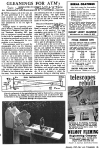
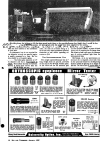
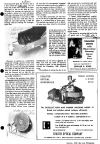
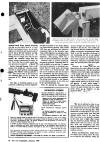
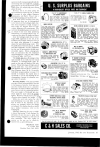
(Note the cool ads
for stuff you can't get anymore)
It uses a Heliostat mirror, telelens 2.7 meters FL




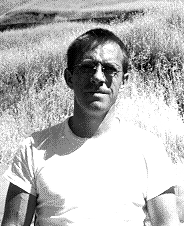
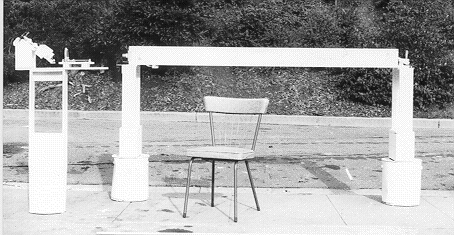
here is the 24 slit
rotating glass disk 105mm diameter

and heeeeeeer's Fred

Fred's Notes on the SHS layout
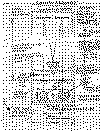
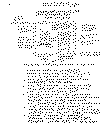
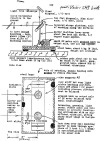
Fred's article 'A Miniaturized Spectrohelioscope' (J. Brit. Astro. Assoc.
85:242, No.3 1975)
